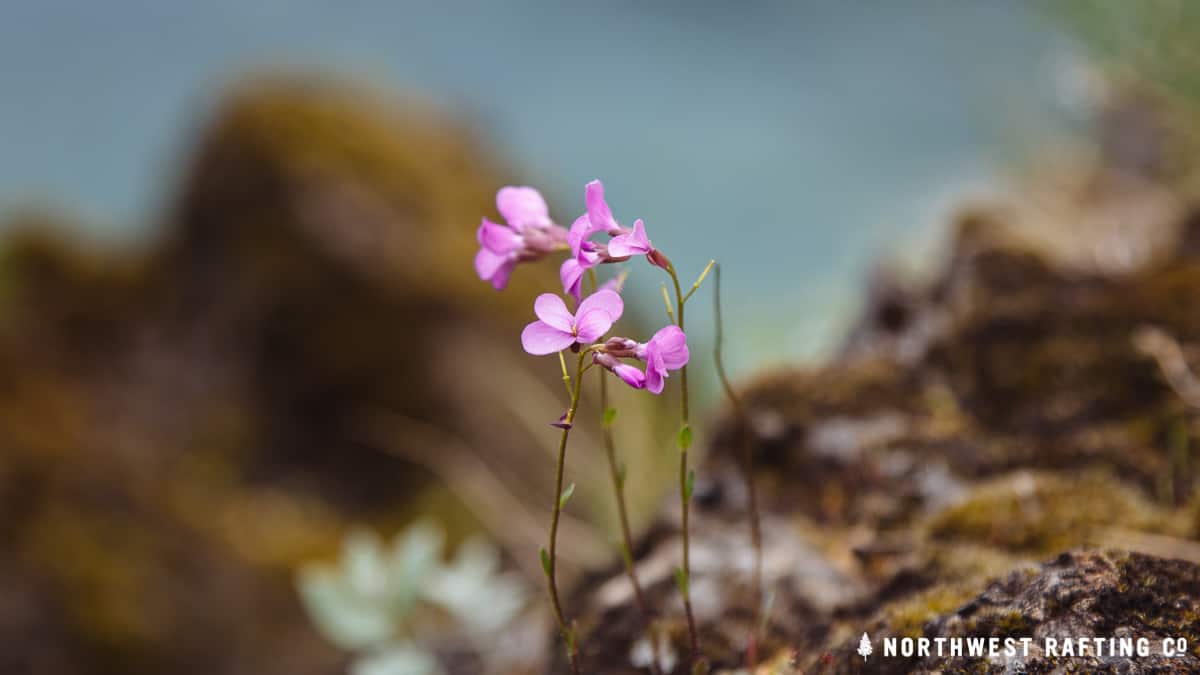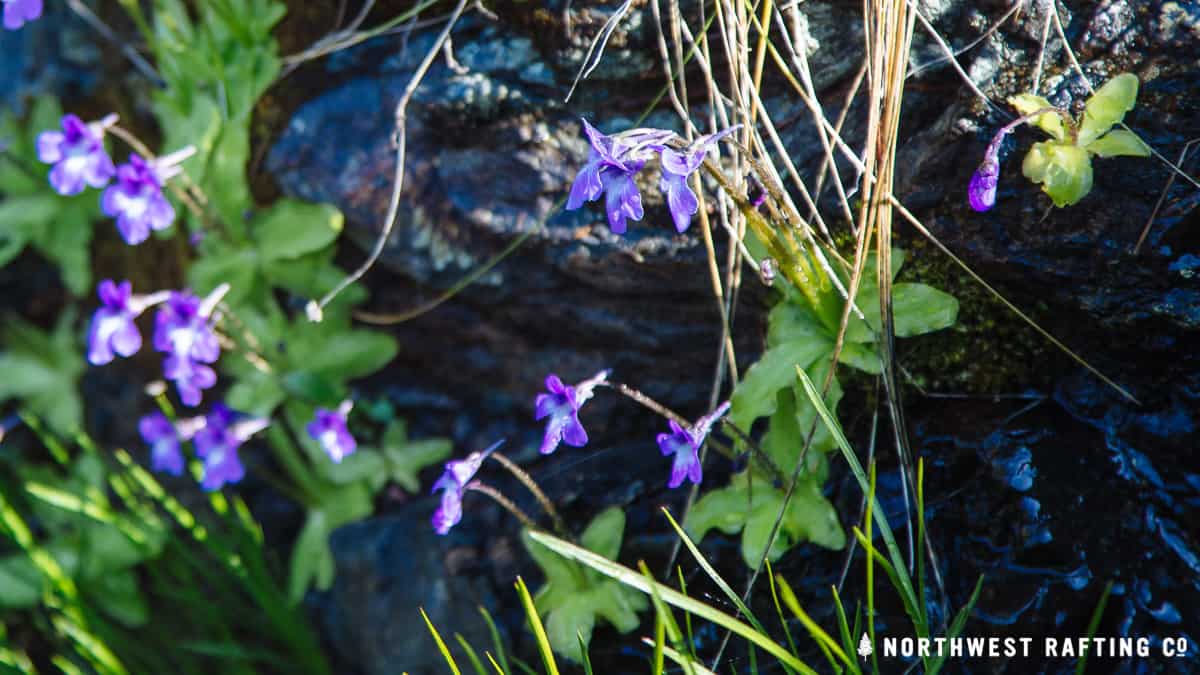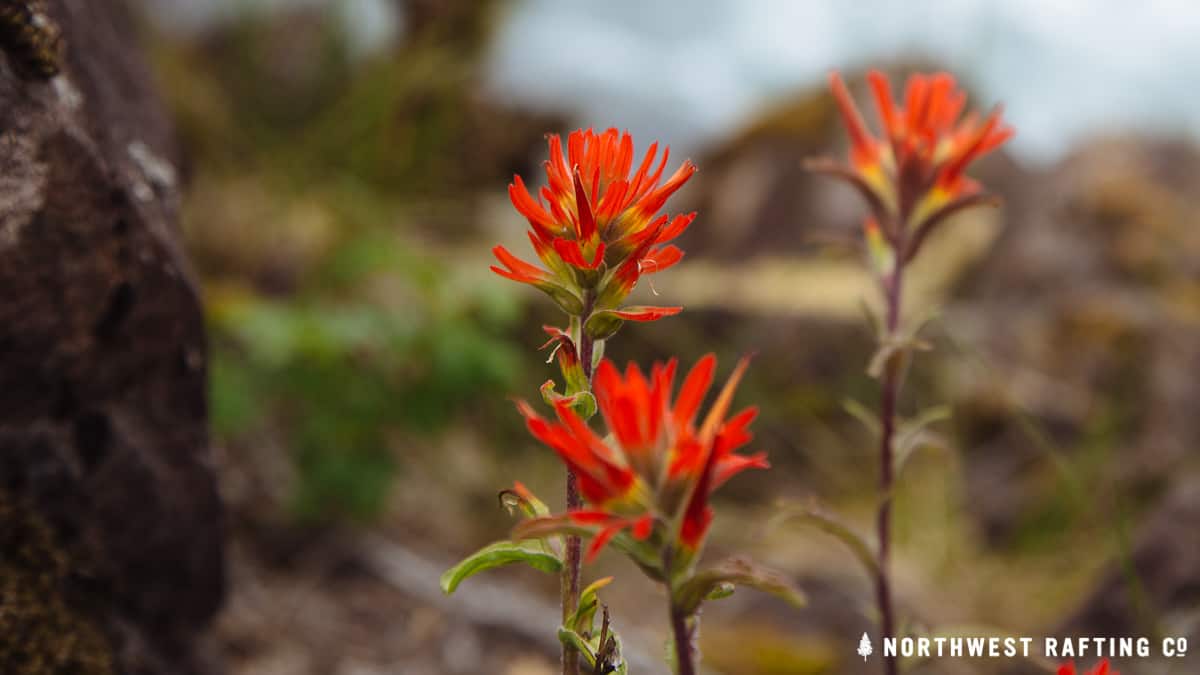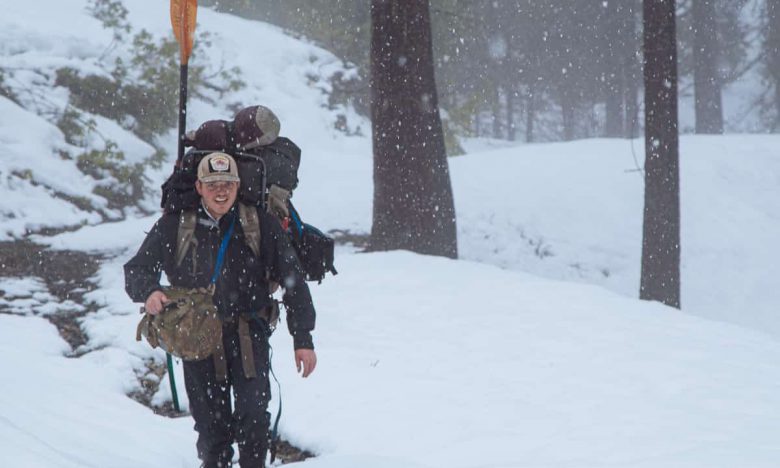One of the “Outstandingly Remarkable Values” that contributed to the designation of the Illinois River as a National Wild and Scenic River is botany. Some of the plants and wildflowers are common and others are rare adaptations to the serpentine geology.
California Lady’s Slipper

The California Lady’s Slipper is a rare orchid found in Northern California and Southern Oregon. Each stem can have up to 21 flowers that are fertilized by trapping insects in their pouch (or slipper).
Tolmie’s Star Tulip

These beautiful flowers are also known as pussy ears. They grow from an underground bulb every year which helps them survive wildfires.
Rock Cress

This rare and endangered plant is typically found growing in rock outcroppings. There are several species that grow from serpentine soil found in and around the Kalmiopsis Wilderness.
Kalmiopsis Leachiana

The namesake of the Kalmiopsis Wilderness is one of the rarest plants in the world, discovered by pioneering botanist Lilla Leach in 1930. Kalmiopsis Leachiana are only found in regions with abundant rainfall in Southwest Oregon with rocky slopes. A small patch of Kalmiopsis can be found near the junction of the Illinois River Trail and York Creek.
Indian Rhubarb (aka Umbrella Plant)

These beautiful clusters of flowers are found near (and often in) the Illinois River. They grow from an extensive series of roots that are found in or near cold water. The flowers appear in the spring and are replaced by large green leaves that turn color in the fall.
Wild Iris

Wild iris found near the Illinois River are various shades of purple with white. They like to grow in shallow water or in well-watered soil. These wild varieties have been cultivated to grow as much larger, domesticated flowers, commonly seen in gardens across the US.
Butterwort

This carnivorous plant with purple flowers uses sticky leaves to trap and digest insects. They are typically found in serpentine soils with nutrient-poor soils near Darlingtonia Californica (pitcher plants).
Darlingtonia Californica (aka Pitcher Plant)

Another carnivorous plant, the Darlingtonia Californica (aka Pitcher plant) lures insects into the mouth of the “pitcher” with its sweet nectar. The edge of the pitcher is slippery and waxy and causes the insects to fall inside. This rare plant thrives in serpentine soil where other plants have difficulty surviving, resulting in less competition for food.
Indian Paintbrush

These colorful plants are found on the west coast of North America. The red blooms are leafs that surround a small flower at the tip. These plants are parasitic with roots that drill into other plant roots to tap their resources.
Lupine

Lupine are tall flowers in the legume family and closely related to the pea plant. Their legume seeds have been cultivated for food for centuries by Native Americans, those living in the Andean Highlands, and even by the Ancient Romans for their high-protein content. Like other legumes, they can convert nitrogen from the atmosphere into a fertilizer for the soil for other plants.
Phlox

Phlox are fragrant intensely colored flowers that can be found growing out of rock walls just upstream of South Bend.
Monkeyflower

Monkeyflowers are a bright yellow annual that grow on wet, exposed areas along the Illinois River. They have 5 petals with red spots.
Camas

Camas Lillies are beautiful purple flowers that grow in rocky, wet areas. Their bulbs were an important food source for Native Americans. Howell’s Camas is a rare species found in serpentine soils.

